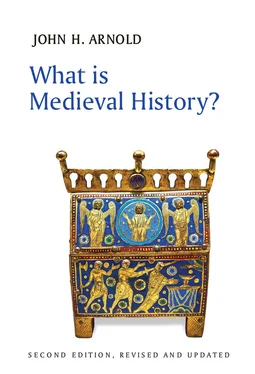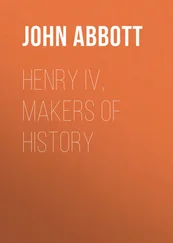In any case, Bartolomeo’s tale is not a story about magic at all. It is really about politics and communication. Despite all the evidence alleged against them, nothing happened to Matteo or Galeazzo Visconti, because the pope simply didn’t have the power to touch them. The very reason that John XXII was in Avignon rather than Rome was that northern Italy had become too politically fraught for him to stay there (the papacy had moved to Avignon in 1309, through a combination of pressure from the French monarchy and factional political fighting in Rome; there it remained until 1377). If the Visconti were attempting to assassinate the pope, it was because of political matters: a few years before Bartolomeo’s reports, John XXII had been attempting to stop conflict between Milan, Brescia and Sicily. Matteo Visconti had agreed to the terms of a peace treaty, but the pope had then, in March 1317, declared that Ludwig of Bavaria held the title of Holy Roman Emperor illegally. Since the Visconti based their right to rule Milan on claims of a past imperial appointment, this threw them back into conflict with the papacy and Milan’s neighbours; and in 1318 Matteo was excommunicated. In theory, excommunication was a very serious matter: one was removed from the community of the Christian faithful, denied the sacraments and, unless reconciled before death, denied entry into heaven. But John XXII had been a little too lavish in his use of excommunication as a political weapon, and contemporary commentators were quite clear that the political struggles going on were nothing to do with matters of faith.
So much for the politics (the complexities of which, if further explicated, could easily fill this entire book and a shelf full more). What of communication? Several forms and facets were apparent in Bartolomeo’s tale, not least the very document in which it was recorded. Inquisition was a highly textual form of inquiry, and the rich details given above – all of which are drawn directly from the evidence – demonstrate in themselves the development of a particular kind of written technology. The magic being discussed was written magic, and although this was innately arcane and specialized, the existence of books and written documents in general was far from rare. A northern Italian city such as Milan was by this period a highly literate society: some estimates suggest that the majority of adults in this kind of milieu could read and write in the vernacular. This was admittedly the likely pinnacle of medieval literacy; in other countries, in rural areas and in earlier centuries, access to texts would sometimes have been much more limited. But mechanisms of communication were always more complex than a stereotyped picture of the middle ages would suggest. As we have already seen, matters of local, national and international politics involved the flow of information across Europe. Even in the countryside, villages might well have a notary who could act as the conduit for written information. And it was not only documents that could bring news, but also people. Bartolomeo travelled with relative ease between Milan and Avignon; the Visconti were capable (presumably through spies) of discovering where he had been in advance of his return. Trade routes linked together various European centres, and indeed connected Europe to the Middle East and North Africa (a topic to which we shall return in a later chapter). Letters, reports, recorded interrogations, archives, sermons, songs, stories and images all circulated across European kingdoms. It was not as information-rich an age as the twenty-first century; but neither was it as isolated or ignorant as is often assumed.
For much of the middle ages, writing was seen as an artisanal skill, something that highly intellectual authors would not stoop to perform themselves; they would, rather, dictate their works to a scribe. Someone like Bartolomeo would have thought of himself as ‘literate’ ( litteratus ), but by this he would have meant particularly that he could read Latin rather than the vernacular, and that through reading Latin he was steeped in the wisdom and traditions of Christian intellectual thought. One could be fluent in writing a vernacular language – as, for example, many merchants would have been – and yet still be seen as illitteratus , lacking in Latin. However, at this very time and place, such conceptions were being challenged by a marginal figure in Bartolomeo’s story: Dante Alighieri. He appears within the tale as an alternative expert upon whom the Visconti could allegedly call. Dante was indeed connected to the northern Italian aristocracy – dependent upon them for his livelihood – and we know from other sources that he had knowledge of learned magic; but there is no direct evidence that he had any connection to magical plots against the papacy. Where Dante really matters is in his own writing, perhaps most famously The Inferno , a vision of Hell that also commented on the society and politics of his time. The key thing about the poet was that he wrote, proudly, in Italian. He was not the first medieval writer to do such a thing, but he was perhaps the first to make a virtue of it, and to claim the ascendancy of the vernacular, as a poetical language, over Latin. And this made him famous, sufficiently famous that he could be invoked by Galeazzo as a credible, albeit veiled, threat to Bartolomeo.
This was a world in motion, some of its essential elements changing in this very moment. Thus, if one scratches the surface of ‘the medieval’ something more complex appears. In introducing the study of medieval history, my first task has been to demonstrate that things are not quite as they initially seem. Yes, it was an age when religion loomed much larger than in many modern European countries. Yes, it contained knights and ladies and monks and saints and inquisitors and all the other inhabitants of a thousand lurid historical novels. But it was neither simple nor unchanging. It was not even ‘one’ thing, in part because when studying the middle ages one may be engaged with more than a thousand years of history and thousands of square miles of geography. But also because if one asked John XXII and Dante Alighieri about the nature of papal power, one would receive two radically different answers. That is, to put the point more broadly, every element of ‘medievalness’ is situated within a certain perspective, differing between different times, places and people, rather than one universal and univocal feature of the period.
Medievalisms and Historiographies
Over a couple of decades at the end of the seventeenth century, a classical scholar at the University of Halle in Germany, Christopher Cellarius (1638–1707), published a book under the title Universal History Divided into an Ancient, Medieval and New Period . Cellarius was far from the first person to subdivide western history into three periods: in his self-conscious links back to a classical tradition, the Italian poet Petrarch (1304–74) had inferred a difference – a darkness – about the period intervening between his own time and the antique past. The lawyer and classicist Pierre Pithou (1539–96) had talked of ‘un moyen age’, and the antiquarian William Camden (1551–1625) similarly of ‘a middle time’. The passing notion of a ‘middle age’ was not new, but what Cellarius did was to build a complete framework for historical time around the concept. And his book was a textbook, imparted as foundational knowledge. Then and ever after, western historians have talked of ‘antiquity’, ‘the middle ages’ and ‘modernity’.
The important thing to note here is that, from the first moments of its inception, ‘medieval’ has been a term of denigration. For Petrarch and later humanists, for the antiquarians, for Pithou and for later Enlightenment philosophers, what mattered was the classical past, and the ways in which it informed and was renewed by the ‘modern’ world around them. Both the ancient ‘then’ and the contemporary ‘now’ were thrown into stark relief by the darkness in between: a darkness of ignorance, decay, chaos, confusion, anarchy and unreason. As the early modern period ‘rediscovered’ (largely via the very middle ages it disparaged) texts and artefacts from the Greek and Roman past, using them as models for its own cultural productions, the middle ages came to stand for a gross barbarity of style and language. Medieval historians were disparaged for their failure to conform to classical modes of rhetoric. Its art was seen as hopelessly unsophisticated, its literature as clumsy, its music similarly lacking. The judgements passed on medieval politics were of a similar, almost aesthetic, vein. As the economist Anne-Robert-Jacques Turgot (1727–81) characterized the period:
Читать дальше




